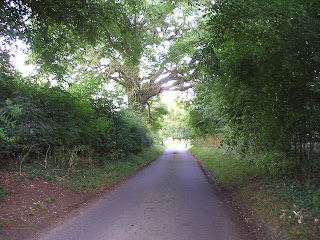A Naughty Boy?
I wonder when Henry started going ‘off the rails.’ Was it down to his parentage? Perhaps living in the small, Thames-side village of Medmenham, where everyone knew one another and so would have known the story behind his birth, may have been a factor. Or was this considered too shameful to be ever spoken of openly again. Whatever, the cause, by 1838 he already had a string of petty offences under his belt when once again he found himself standing in front of the Buckinghamshire Assizes for larceny.

Poor Henry’s troubles really began before he was even born. His mother, Ann Chown, planned to marry local lad Thomas Burridge in the village church in the May of 1809 but on the 14th, halfway through the Banns being called, Thomas had them cancelled. He had discovered that Ann was pregnant with Henry, the father being another village boy, Elias Nibbs. Ann had very nearly got away with her deception for Henry had been born and baptised by 4th June. Ann and Elias never married nor, it seems, lived together, for within a short time they had both married others.

Henry couldn’t have been a clever thief for, on the 4th April 1838, he was sentenced to six months imprisonment with hard labour for the theft of an axe and mattock from William Chown, his uncle, and a billhook from John Rockall, his stepfather. He was even less clever when he tried his hand at burglary again despite travelling four miles to the local town of Marlow for his crime. This time he stole a shovel, the property of William Brangwin and so, within weeks of being freed from jail, in November he was back before the bench once again.

Standing before the magistrate, Squire Robert Hammond, Henry heard how the shovel was readily identified by Brangwin’s initials being burnt into the handle. Richard Ayres testified that he had been using it on the day of the theft and Thomas Wright, the local pawnbroker told how Henry (using the alias Beaver) pawned it for one shilling – 5p in modern coinage. Hammond was not prepared to give Henry another chance. For this crime he was sentenced to seven years transportation to Australia. It would be interesting to know how the family and villagers reacted to the sentence. Perhaps it was relief for most but more likely, for his mother Ann, it was harrowing.

Henry was taken from prison on 13th May 1839 to Sheerness, a port east of London, where he boarded Convict Ship Parkfield. There were already one hundred prisoners aboard and now it was filled to capacity with the addition of one hundred and forty more men. A military guard of over thirty kept order and six women and nine children also boarded – as this was a male convict ship, one assumes they were planning to join loved ones or just hoping to seek a better life. The voyage was better than normal; with no storms the sea remained calm. When they arrived at Port Jackson, New South Wales, on 1st September, the ship’s Surgeon, Alexander Neill was commended for the cleanliness of the ship and the health of the men for there had been no deaths. Interestingly, in his Journal he mentions that he had rejected one prisoner with scurvy: “one of the worst cases I’ve ever seen and him, not yet at sea.” The convicts were taken ashore to Hyde Park Barracks for processing. We hear nothing more of Henry until the 29th May 1840 – a simple entry in the register: Henry Chown, drowned, Sydney. No further details were given.

What became of Ann, Thomas Burridge and Elias Nibbs? Ann married John Rockall in 1811 and had nine children, dying in 1872, aged 85. Elias married in 1813 and had one known child, Richard, before he disappears from the scene. Interestingly, a Richard Nibbs was also transported on the same ship as Henry – were they half-brothers in crime? And Thomas Burridge? He obviously recovered from the upset for within eight months he had married Ann’s younger sister Mary. They had seven children before Mary died in 1828. He later married again and fathered three more children. For such a small place, Medmenham, had its fair share of scandal and excitement!

I have been researching my family history for many years and have uncovered all sorts of stories. There seems to be a disproportionate number of ancestors that had illustrious careers, reaching both fame and wealth. How very exciting to find, at last, a real black sheep in the family!
Henry Chown, my ancestral 1st cousin born 9th May 1809 Medmenham, Buckinghamshire, England died 29th May 1840 Sydney, New South Wales, Australia, aged 31
Sources:
The National Archive British Newspaper Archive Wikipedia Convict Records, Australia Ancestry UK


Comments
Post a Comment